Are you looking for an easy and cost-effective way to upgrade your kitchen cabinets? Insulating kitchen cabinets is a great option! Not only can it help protect your kitchen from humidity, but also makes the space more efficient overall. In this blog post, we’ll explore how to insulate kitchen cabinets, as well as the potential benefits of doing so.
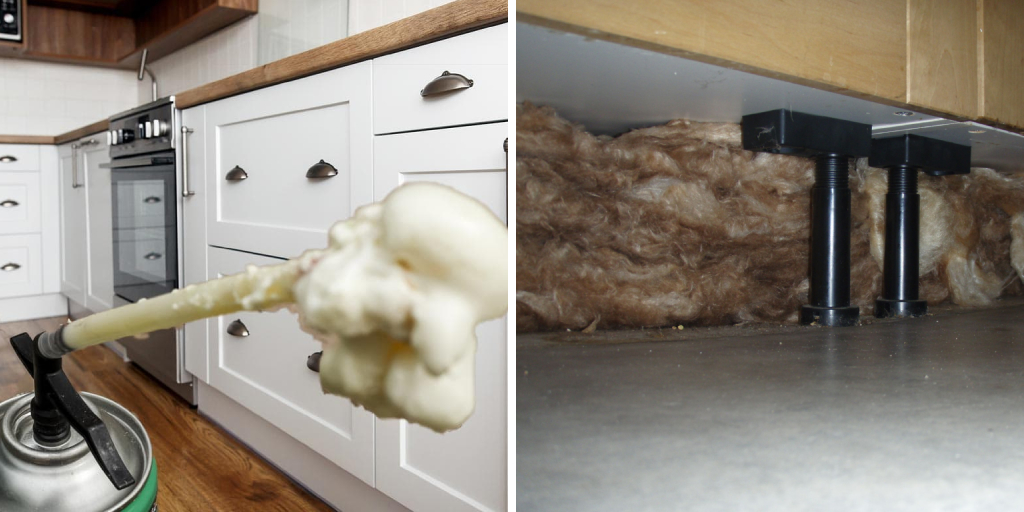
Plus, we’ll share tips on how to go about installing insulation yourself without breaking the bank or taking up too much time. Whether you’re looking for improved energy efficiency in your home or just hoping to freshen up and update your existing cabinetry, this guide has information that will be helpful for any DIYer. So let’s get started – read on to learn all about insulation options for kitchen cabinets and how best to take advantage of them in your own home!
Why May You Need to Insulate Kitchen Cabinets?
1 . To Save Money on Heating and Cooling Costs
Insulating your kitchen cabinets can help reduce the amount of energy needed to heat or cool your home, ultimately saving you money on utility bills. This is because insulation helps to regulate the temperature inside your cabinets, keeping them cooler in summer and warmer in winter.
2 . To Prevent Moisture Damage
Moisture can easily build up inside cabinets, especially in the kitchen where steam and humidity are common. This can lead to mold growth, rotting of wood, and damage to the contents of your cabinets. By insulating your cabinets, you can prevent moisture from seeping in and causing damage.
3 . To Reduce Noise
Insulation not only helps to regulate temperature but also acts as a sound barrier. This is especially important in the kitchen, which can be a noisy environment with appliances running and dishes clanging. Insulated cabinets can help absorb some of the noise, making your kitchen a quieter place.
4 . To Improve Energy Efficiency
Insulating your kitchen cabinets not only helps to save on heating and cooling costs but also improves overall energy efficiency within your home. By reducing the amount of heat or cool air that escapes from your cabinets, your HVAC system won’t have to work as hard to maintain a comfortable temperature.
5 . To Extend the Lifespan of Your Cabinets
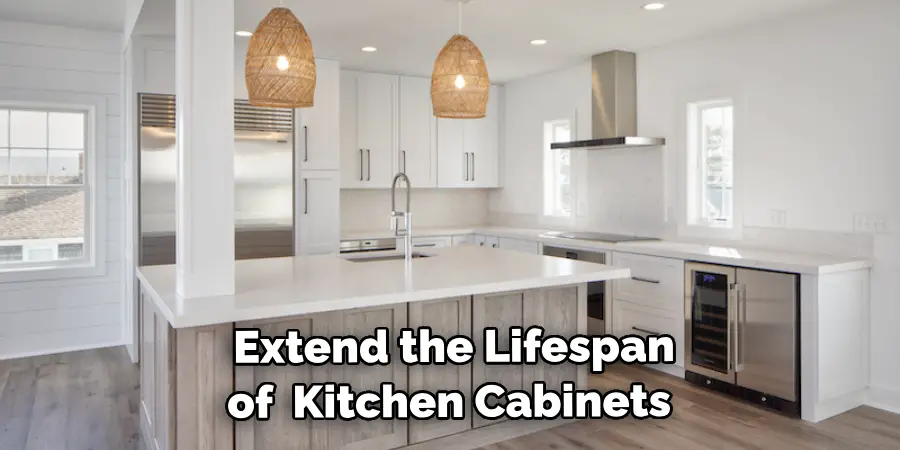
By preventing moisture damage and regulating temperature, insulation can help extend the lifespan of your kitchen cabinets. This is especially important for wooden cabinets which are susceptible to warping and rotting due to moisture. With proper insulation, your cabinets will last longer and require less frequent repairs or replacements.
How to Insulate Kitchen Cabinets in 5 Easy Steps
Step 1: Prepare the Cabinets
Before you begin insulating, make sure your cabinets are clean and free from any debris or dust. Remove all items from inside the cabinets and wipe down the surfaces with a damp cloth.
Step 2: Choose Your Insulation Material
There are various types of insulation materials available, such as fiberglass, foam board, and reflective foil. Consider factors like cost, moisture resistance, and ease of installation when choosing the right insulation for your cabinets.
Step 3: Measure and Cut Insulation
Measure the interior walls of your cabinets and cut the insulation material to fit. It’s important to leave a small gap between the insulation and the back panel of your cabinet to allow for proper air circulation.
Step 4: Install Insulation
Place the cut insulation pieces inside your cabinets, ensuring they fit snugly against the walls. Use adhesive tape or staples to secure the insulation in place.
Step 5: Reinstall Cabinet Contents
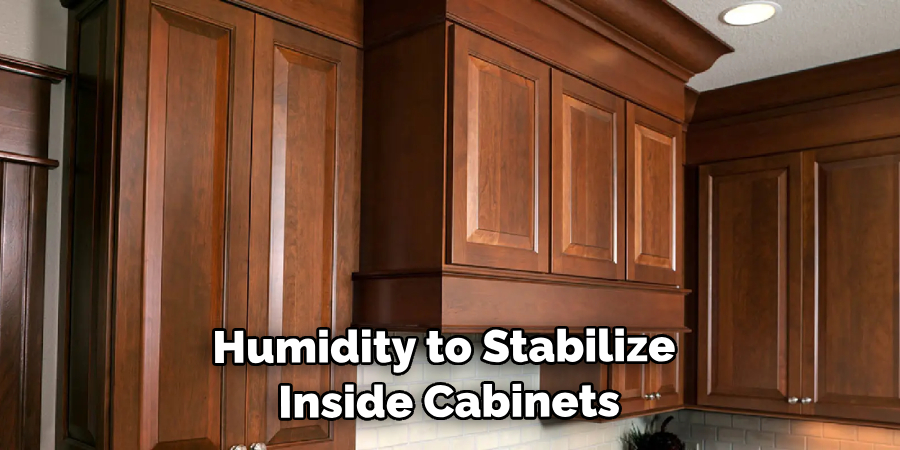
Once all of your cabinets are insulated, you can put everything back inside and enjoy the benefits of a well-insulated kitchen. Keep in mind that it may take a few days for the temperature and humidity to stabilize inside your cabinets.
Some Extra Tips to Insulate Kitchen Cabinets
1 . Use Foam Insulation
Foam insulation is one of the best options when it comes to insulating kitchen cabinets. It is lightweight, easy to install and provides excellent thermal insulation. You can use expanding foam or spray foam to fill the gaps between your cabinets and walls, as well as any exposed seams or joints. Make sure to follow the instructions carefully when using foam insulation, as it can expand significantly and cause damage if not applied correctly.
2 . Apply Weatherstripping Tape
Weather stripping tape is another effective way to insulate your kitchen cabinets. This type of tape is typically made from foam or rubber and can be easily attached to the edges of your cabinet doors and drawers. It creates a seal that prevents cold air from seeping in and helps to maintain a consistent temperature inside your cabinets. Weather stripping tape is also relatively inexpensive and can be found at most hardware stores.
3 . Seal Any Cracks or Gaps
Before insulating your kitchen cabinets, it’s essential to check for any cracks or gaps that might be letting cold air in. Use caulk or sealant to fill in any small openings around your cabinets. You can also use putty or expanding foam for larger gaps. This step will not only help with insulation but also prevent pests from entering your cabinets.
4 . Install Cabinet Door Closers
When insulating kitchen cabinets, it’s important to ensure that the doors remain closed tightly to maintain the desired temperature inside. Installing cabinet door closers is an excellent way to ensure that your cabinets stay shut. These small devices can be attached to the hinges of your cabinet doors, and they automatically close them after use. This will help to keep out drafts and maintain a consistent temperature inside your cabinets.
5 . Consider Using Insulated Cabinet Panels
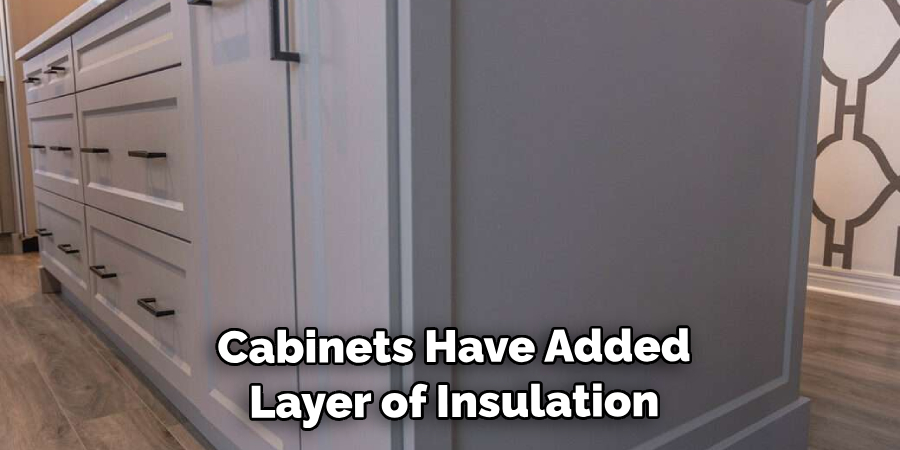
If you are building new kitchen cabinets or remodeling your existing ones, you may want to consider using insulated cabinet panels. These specially designed cabinets have an added layer of insulation that helps to keep your food and dishes at the desired temperature. They are also more energy-efficient and can save you money on your heating bills in the long run.
6 . Don’t Forget About the Floors
While insulating kitchen cabinets is essential, don’t forget about the floors. Since cold air can easily seep through the floor, it’s essential to insulate this area as well. You can use foam insulation or weatherstripping tape along the edges of your cabinets and around any exposed pipes or electrical outlets. This will help to create a more tightly sealed space and prevent drafts from entering your kitchen.
By following these extra tips, you can ensure that your kitchen cabinets are well-insulated and keep your food and dishes safe from extreme temperatures. Remember to regularly check for any cracks or gaps that may develop over time and address them promptly to maintain the effectiveness of your insulation. With proper insulation, you can also save energy and reduce your heating costs in the long run.
Frequently Asked Question
What Precautions Should I Take While Insulating My Kitchen Cabinets?
There are a few precautions that you should keep in mind while insulating your kitchen cabinets:
- Make sure to use protective gear such as gloves, masks, and goggles to prevent any harm from insulation materials.
- Always follow the recommended safety guidelines of the manufacturer for the insulation material you choose.
- Keep children and pets away from the area where you are insulating.
- Ensure proper ventilation in the room to avoid any potential health hazards.
Can I Insulate the Existing Kitchen Cabinets?
Yes, you can insulate existing kitchen cabinets. However, it may be more challenging and time-consuming than installing insulation in newly built ones. It is recommended to seek professional help for insulating existing kitchen cabinets to ensure proper installation and maximum efficiency.
How Will Insulating My Kitchen Cabinets Benefit Me?
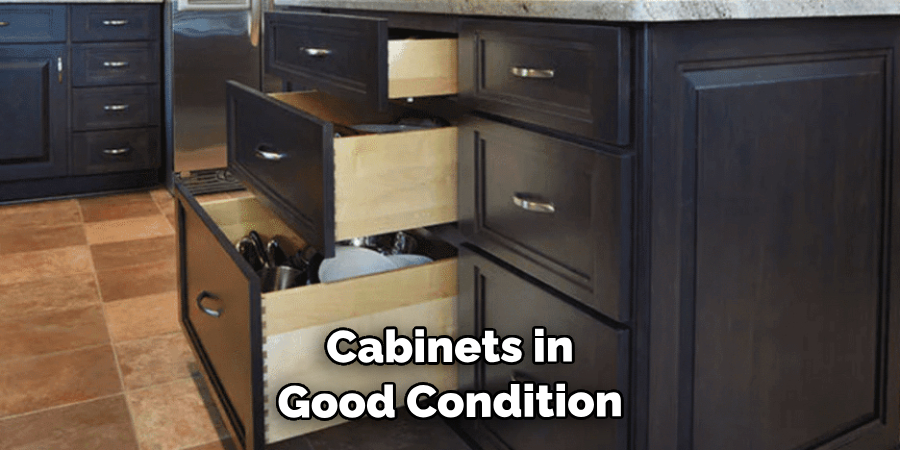
Insulating your kitchen cabinets can provide several benefits, such as Proper insulation can help trap heat or cool air inside the cabinet, reducing energy consumption for heating or cooling the room. Moisture can damage wood and cause mold growth in cabinets. Insulation can help prevent moisture buildup, keeping your cabinets in good condition for a longer time. Additionally, insulation also helps reduce noise levels inside the kitchen.
How Much Will It Cost to Insulate Kitchen Cabinets?
The cost of insulating kitchen cabinets will depend on various factors such as the size and number of cabinets, the type of insulation material used, and labor charges (if you hire professionals). On average, it can cost anywhere from $200 to $600. However, the benefits of insulation such as energy savings and increased durability of cabinets make it a worthwhile investment in the long run.
Conclusion
Insulating kitchen cabinets is an easy and cost-effective way to save on energy costs, prevent moisture damage, reduce noise, and improve overall energy efficiency in your home. With just a few simple steps, you can extend the lifespan of your cabinets and create a more comfortable environment in your kitchen.
Now you know how to insulate kitchen cabinets, take the necessary steps to start saving money and improving your home today! So go ahead and get started on insulating your kitchen cabinets for a more efficient and comfortable space. Your wallet (and your cabinets) will thank you in the long run.
Professional Focus
Angela Ervin, a former interior designer turned blogger, specializes in kitchen design and renovations. Through her website, she blends her passion for cooking with design expertise, sharing practical and creative ideas. Known for balancing functionality and beauty, Angela’s insightful content has made her a trusted voice in home design and lifestyle.
About the Author
Angela Ervin, an experienced interior designer and blogger, combines her passion for kitchen renovations with storytelling. Living in Petersburg with her family, she enjoys cooking and testing her projects firsthand. Known for her humor and relatable style, Angela shares creative, functional design insights through her content, making her a trusted voice in home design.
Education History
University: Virginia Commonwealth University
Degree: Bachelor of Fine Arts (BFA) in Interior Design
- Angela’s education at VCU focused on mastering core interior design principles, including spatial planning, color theory, materials selection, and sustainable design practices.
- She gained hands-on experience through studio projects and collaborative design exercises, which honed her ability to create functional and aesthetically pleasing environments.
- Her coursework also emphasized problem-solving and practical applications of design, preparing her for real-world projects like her self-directed kitchen renovations.
- The program’s strong foundation in both technical skills and creative expression shaped Angela’s ability to seamlessly integrate form and function in her work.


